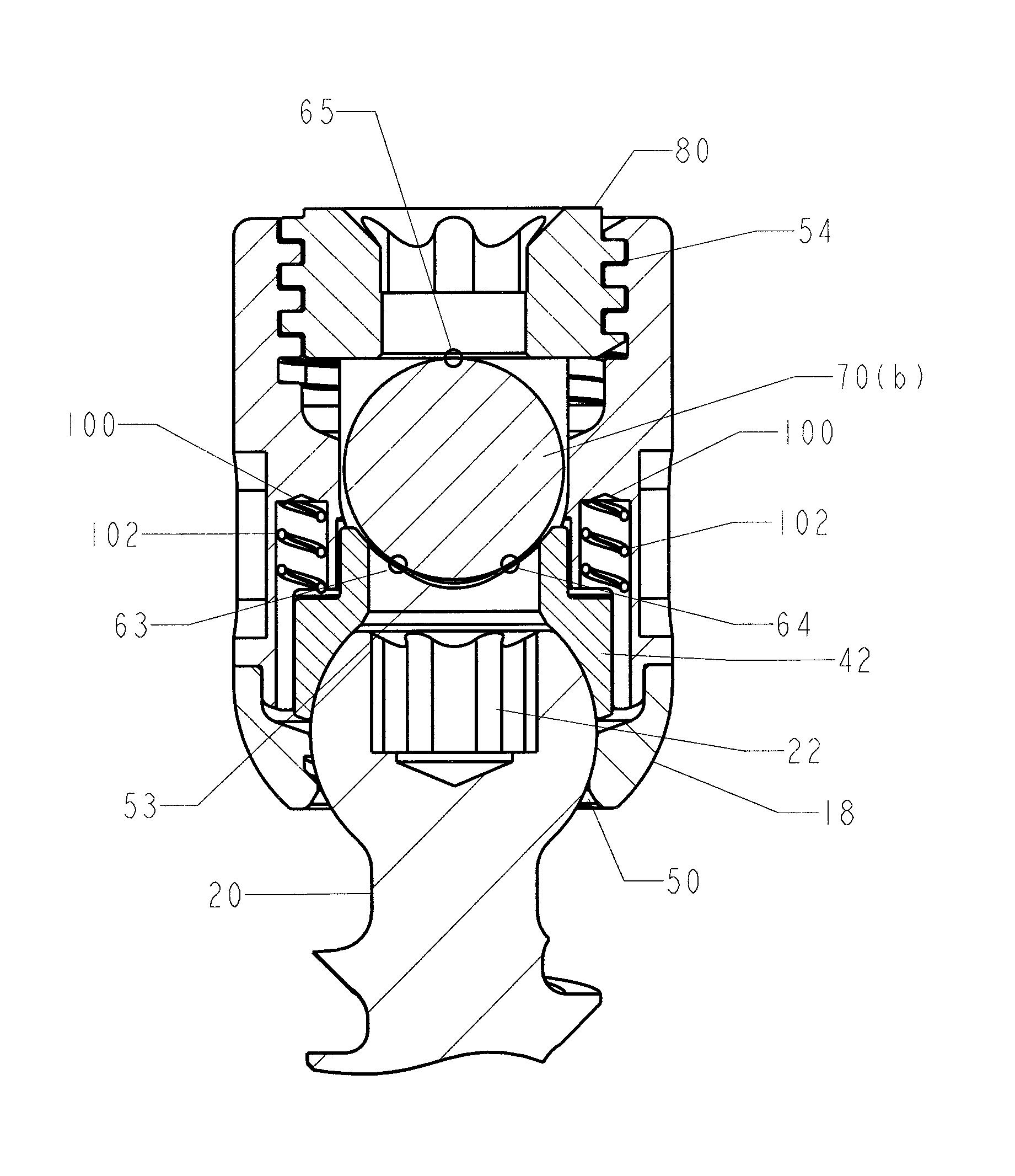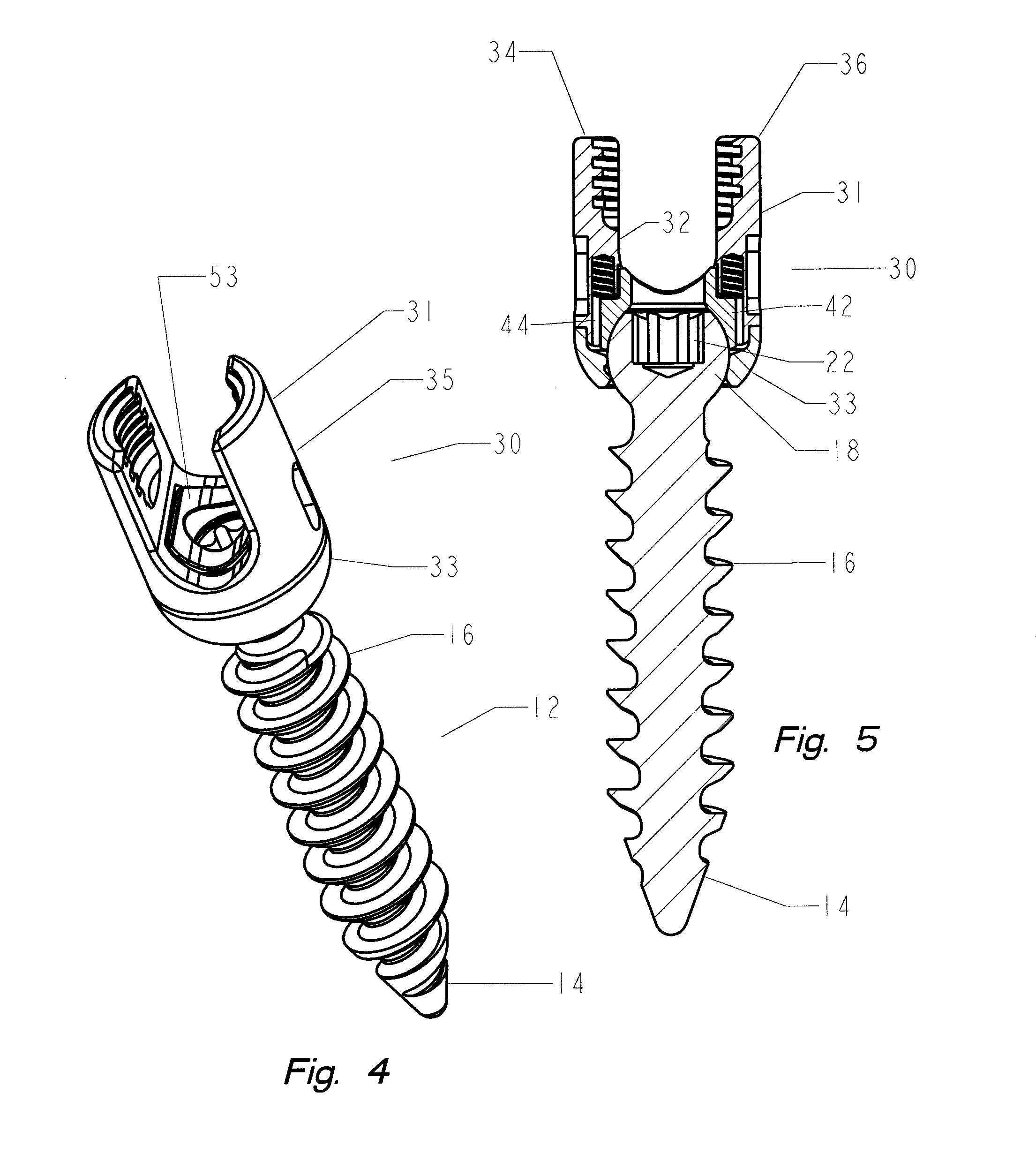Thread-thru polyaxial pedicle screw system
a technology of pedicles and threads, applied in the field of threads, can solve the problems of locking pins, difficult for surgeons to grasp in the midst of surgery, lack of stabilized angular placement positions during installation, etc., and achieve the effect of lowering inventory costs
- Summary
- Abstract
- Description
- Claims
- Application Information
AI Technical Summary
Benefits of technology
Problems solved by technology
Method used
Image
Examples
Embodiment Construction
While the present invention is susceptible of embodiment in various forms, there is shown in the drawings and will hereinafter be described a presently preferred embodiment with the understanding that the present disclosure is to be considered an exemplification of the invention and is not intended to limit the invention to the specific embodiments illustrated.
Referring generally to the Figures, disclosed is an exemplary embodiment of the thread thru polyaxial pedicle screw system for use in a spinal fixation system. The thread-thru pedicle screw system (10) is based on an anchoring member formed from a bone screw (12) including a shank (14) with at least one helical thread (16) formed along the length thereof. It is important to note that the proportions of the bone screw depicted are for illustrative purposes only and variations in the length of the shank, diameter of the screw, thread pitch, thread length, number of thread leads, shank induced compression and the like may be vari...
PUM
 Login to View More
Login to View More Abstract
Description
Claims
Application Information
 Login to View More
Login to View More - R&D
- Intellectual Property
- Life Sciences
- Materials
- Tech Scout
- Unparalleled Data Quality
- Higher Quality Content
- 60% Fewer Hallucinations
Browse by: Latest US Patents, China's latest patents, Technical Efficacy Thesaurus, Application Domain, Technology Topic, Popular Technical Reports.
© 2025 PatSnap. All rights reserved.Legal|Privacy policy|Modern Slavery Act Transparency Statement|Sitemap|About US| Contact US: help@patsnap.com



